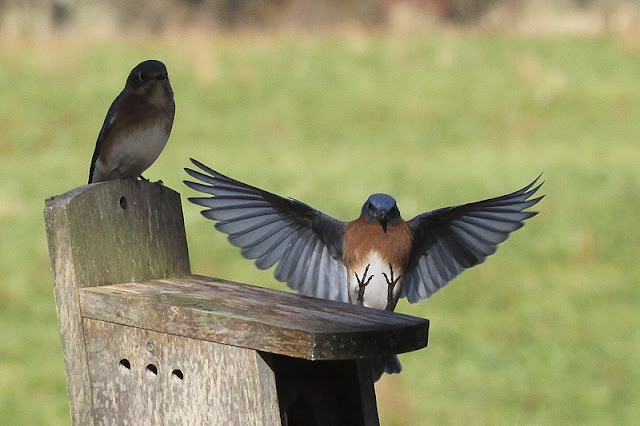 |
| Eastern Screech Owl - John James Audubon |
Pliny the Elder wrote these words in the first century; they capture one side, the dark side, of the conflicting folklore of these mysterious birds who rule the night. Most owls are nocturnal, and so they are not often seen. But their voices carry through the night air filling it with eeriness. Henry David Thoreau, listening at night from his cabin on Walden Pond, sensed vastness and mystery in the solemn song of the Eastern Screech Owl: “‘Oh-o-o-o--o that I had never been bor-or-or-or-orn!’ sighs one on this side of the pond, and circles in the restlessness of despair to some new perch in the gray oaks. Then ‘That I never had been bor-or-or-or-orn!’ echoes one on the further side ....”
The doleful wail of the screech owl seems to warn of disaster, death, or disease. In our Southern states, a person awakened from sleep by its notes must take immediate action to ward off evil by turning his left shoe upside down, or turning his left pants pocket inside out, or throwing a piece of iron into the fire. But even in staid and sober New England there is lingering superstition. Not many years ago “one that took up residence for a few days in a church tower, was credited with foretelling - if not indeed causing - the death of a citizen of dignity, domiciled next door.” (Forbush)
When I lived in Pennsylvania, I might awake in the middle of the night and hear the distant song of the Eastern Screech Owl, plaintive and long drawn out. It did seem sad and even foreboding, and I had to remind myself that I was merely listening in on a love song - a song of passion when it fell on the ears of another owl.
Only once have I been able to study the screech owl. One March, a Screech Owl took up residence in a flicker box mounted on a maple in our yard. I looked out my kitchen window one early evening, and saw this face peering out. For a quarter of an hour it surveyed our yard, then slowly emerged from the box and flew into the deepening night. This was repeated for about two weeks, and then the bird disappeared. I did not then know about turning a shoe upside down or throwing iron in the fire, but there was no evil that occurred in my life, or even in my neighborhood, that I know of.
There are few, if any, screech owls which breed in Windham County, so you don’t need to be too concerned. However, if you are in the Lake Champlain region ....







































